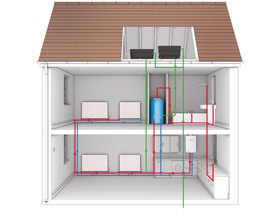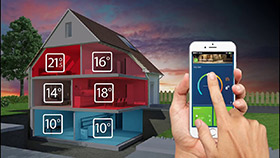Celebrating Over 50 years in business

ABW Heating Limited opened its doors in July 1970. Back then, most boilers were floor standing and flue gases went up the chimney or through a large square external terminal at waist height or if you were about five, eye level! Hot water cylinders were invariably badly insulated, relying on old blankets to retain any heat. Heating controls consisted of a simple 24hr timer in the kitchen or airing cupboard and a room thermostat in the hall.

Radiators came in a grey or white primer finish and sadly thermostatic radiator valves, if fitted, often stuck shut after being off during the hot summers. Over half a century has passed, for many of us the memory still remains of walking in the shadow of an engineer proudly carrying his dust sheet in one hand and a metal tool box containing mysterious items such as a ‘U’ gauge, pump pliers, stilsons, footprints together with neon, flat and ‘phillips’ screw drivers, in the other.
Central Heating Systems

Boilers used to dominate a kitchen, now where we fit boilers and how we control our heating systems has changed beyond all we could have thought it possible, boilers are smaller, lighter and much more fuel efficient with modern flue systems allowing a boiler to be fitted almost anywhere in your home. Not all hot water cylinders require an additional cold water storage cistern in the roof space, some can be fitted directly to the mains water supply. Both types are pre-insulated meaning that either type of hot water storage system will minimise heat loss allowing the stored water to stay warmer longer and not dry the towels or bed sheets stored in the ‘airing cupboard’. Combination boilers will eliminate the need to store both hot and cold water, sometimes freeing valuable storage space and meaning that you often only heat the water as it is being used.

Controls are more flexible than ever before, some allowing us to use our mobile phone to adjust the heating system, whilst others keep to a more traditional set up with room thermostats that allow us to set times and temperatures as well as programme when the water is to be heated. Improvements in manufacturing allows radiators to achieve heating outputs similar to an existing radiator whilst taking up less wall space and designer radiators come in all manner of shapes, colours and sizes. Thermostatic valves are now almost trouble free the actuators are generally the manual type known to many but some are battery operated and activated as part of a more sophisticated control system.
